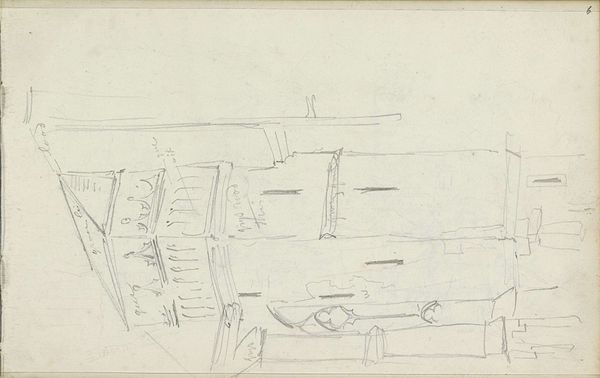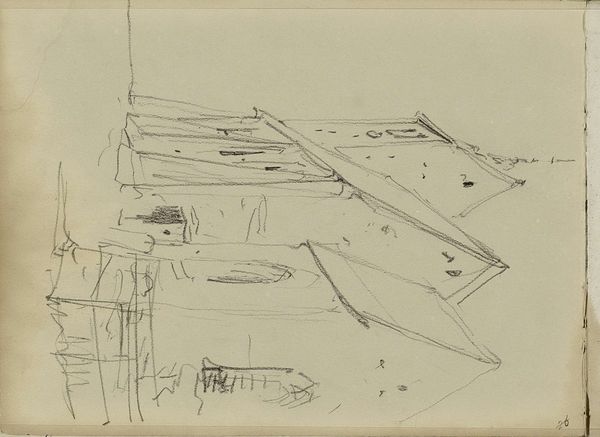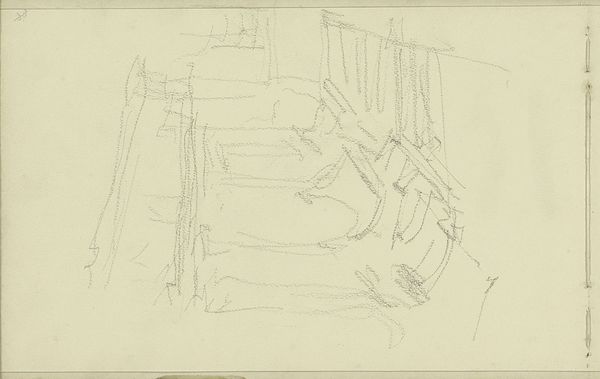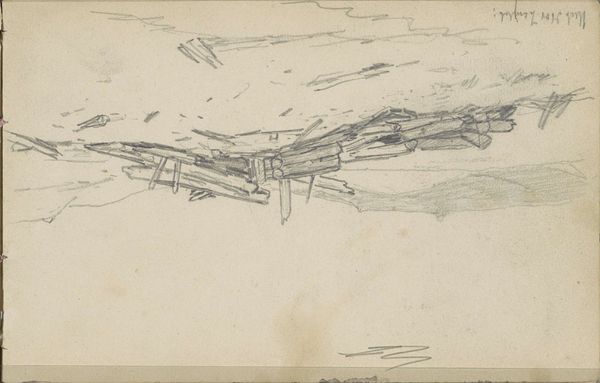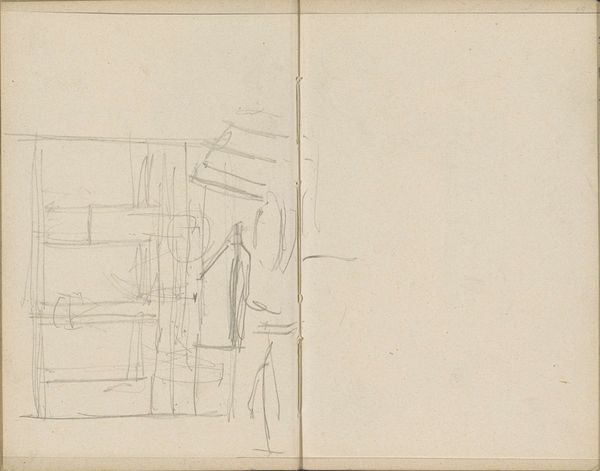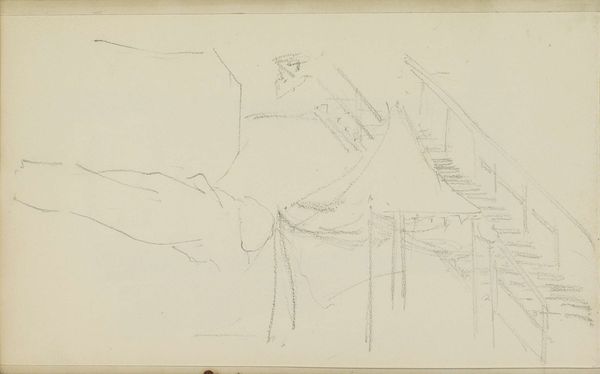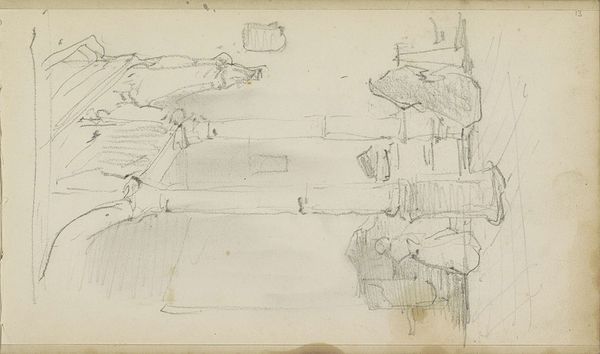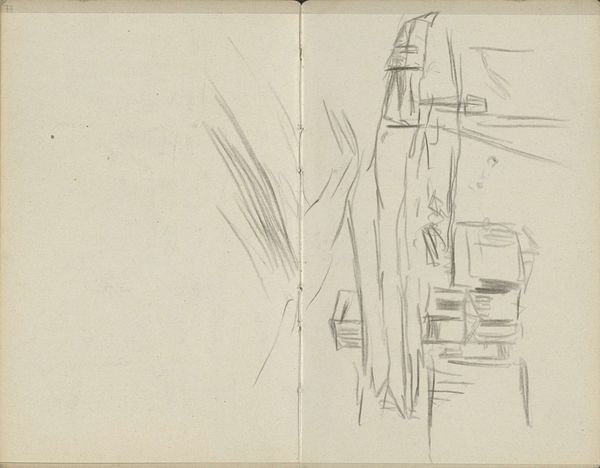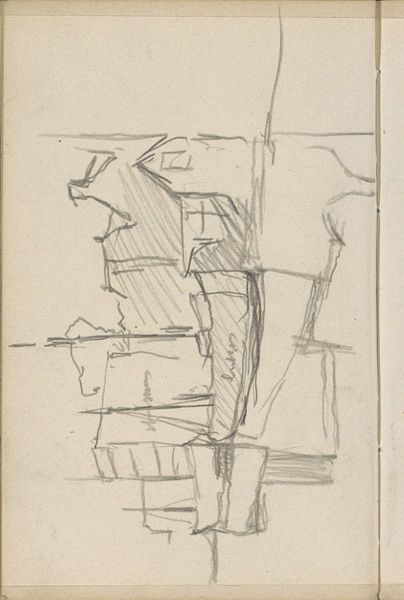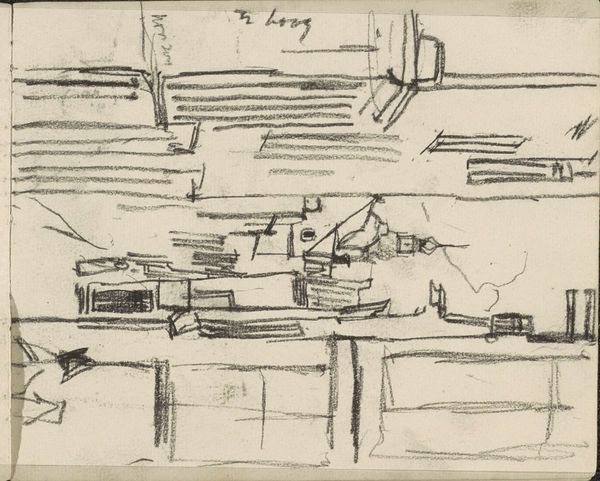
Copyright: Rijks Museum: Open Domain
Curator: This is "Studie," a pencil drawing on paper by Johannes Bosboom, made sometime between 1845 and 1891. It is currently held at the Rijksmuseum. Editor: The scene is stark. I'm immediately struck by the simple geometries rendered in the grayscale pencil work. It almost feels like a study of light and shadow through geometric shapes. Curator: I think Bosboom’s skill really lies in suggesting so much with so little. You get a sense of the rawness of the paper itself – almost like seeing the scaffolding behind a finished building. Editor: Indeed. The work embodies the materiality of 19th-century artistic production – the emphasis on readily accessible materials reflects broader social and economic conditions within Romanticism and academic-art. Curator: Absolutely. Looking closer, the choice of a quick, almost ephemeral, medium speaks to the artist's intention. Pencil on paper, as opposed to more labored techniques like painting, provides an intimate glimpse into the artist’s process, focusing attention on the geometric layout. Editor: And thinking about audience—pencil sketches are generally understood as informal preliminary studies that offer access into a different mode of seeing, as well as reflect the increasing accessibility of paper for studies in the nineteenth century, therefore transforming notions of public accessibility within a traditional artistic practice. It asks us to contemplate its existence not merely as art, but as part of art's broader intersectional purpose in society. Curator: Furthermore, note how he captured this Romanticist and academic perspective via linear composition of these flat, yet slightly three-dimensional geometric elements that invite introspection on shape and size. I agree that it challenges our standard understanding of form itself! Editor: Considering these elements, the intersection of access, Romanticism, geometry, and materialism evokes profound questions about identity formation against socio-political history. Curator: Thank you for helping to clarify these perspectives in today’s environment—we’ve successfully identified essential ways through which artists and consumers were able to re-evaluate creative production in 19th century society! Editor: I appreciate the insight too—it's fascinating how the seemingly simplest artwork encourages layered examination.
Comments
No comments
Be the first to comment and join the conversation on the ultimate creative platform.
